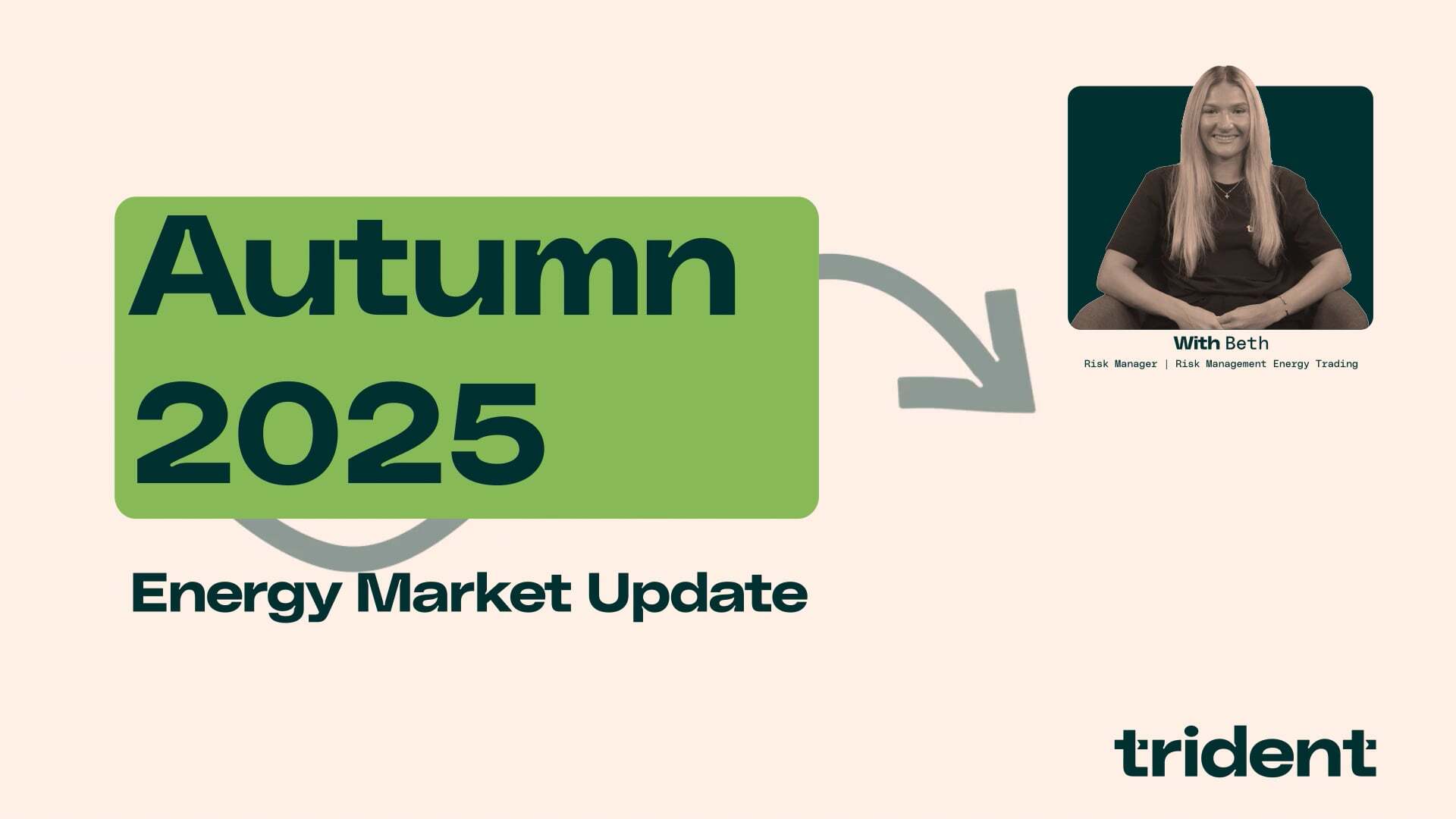
Autumn 2025 Energy Market Update: Key Risks and What to Watch
Moving through Autumn 2025 into the Winter months, energy markets face a mix of shifting weather risks, supply dynamics, and policy developments.
During this update, we’ve highlighted the key market movements, what to watch out for as winter approaches, and what it could mean for your energy strategy.
Watch the full video below or scroll down for the key takeaways.
EU Supply-Demand Balance
The outlook heading into winter is actually quite optimistic. NESO’s recent update points to the UK’s strongest electricity margins in six years, thanks to stronger battery storage, improved gas generation, and new interconnectors that boost grid flexibility.
On the gas side, National Gas is forecasting a 3% drop in winter demand, mainly from lower power sector usage. Supply is considered secure though, even in high-stress scenarios, due to stable flows from Norway, UK Continental Shelf production, and flexible Liquefied Natural Gas, or LNG, supply.
On the continent, reduced downtime on France’s nuclear fleet and rising renewables are helping reduce gas burn, which in turn supports regional stability.
For Europe, winter started with storage about 12% below recent norms, but relaxed EU refill rules and growing reliance on LNG have helped stabilise prices so far.
The UK’s increasing dependence on LNG does bring risk, particularly from global supply shocks, colder weather, or rising Asian competition, so these fluctuations could quickly shift the balance.
LNG
Onto LNG, and although tensions escalated in the Middle East last quarter, global LNG prices have held steady, with Asian and European benchmarks sitting between $10 and $12 per unit.
Europe’s been attracting strong LNG supply, mainly due to weak Asian demand and strong output from the US and this has helped reduce the pressure on European storage.
Looking ahead, 34 billion cubic metres of additional supply is expected to come online this winter, which could weigh on prices and potentially revive Asian demand, which has been limited by high prices and softer industrial activity.
LNG now accounts for 24% of the UK’s gas supply. That makes it vital for Europe to stay competitive, especially with plans to phase out Russian LNG by 2027.
Recently, China took deliveries from the sanctioned Arctic LNG 2 terminal, freeing up more supply for Europe. But with that route closing for the winter and Egypt set to increase imports, competition could pick up again.
Weather
Weather is playing a big part in energy demands, and the early seasonal forecasts suggest a higher chance of colder weather early in the season.
Ocean and atmospheric conditions are favouring high pressure over north-west Europe, which means cold, dry, and low-wind spells, all of which could lift gas demand.
As we move into Q1, the weather outlook is less clear. There’s no strong consensus on temperatures, but low wind generation is expected to persist - similar to what we saw in early 2025, when prices spiked due to limited renewables.
There are also signs of an increased risk of sudden stratospheric warming in January and February. These events can disrupt the polar vortex and lead to periods of extreme cold.
Geopolitics
The markets have been relatively stable in the face of geopolitical risk recently, but this can always shift quickly.
In Ukraine, recent Russian attacks have knocked out around 60% of domestic energy capacity, just ahead of the heating season. The country is expected to increase imports by up to 30% to meet demand, which could tighten Europe’s overall balance.
Although there’s been a ceasefire in Gaza, any renewed instability in the Middle East could still disrupt global LNG shipping and push prices higher and it’s something that we will be keeping a keen eye on.
Broader Market Drivers
Looking at some of the broader market drivers now and with oil, prices have remained supported through summer, recently returning to around $85 per barrel.
The IEA forecasts looser balances ahead. Supply is expected to rise by 3 million barrels per day in 2025, and by another 2.4 million in 2026, while demand growth slows well below normal levels. If OPEC+ raises output further, we could see a market surplus by 2026, which could weigh on prices.
Carbon prices have risen by around a third since the summer, supported by the UK and EU’s agreement to link their emissions trading schemes.
There’s no firm timeline for the re-link just yet, but investors are already taking note, with fund positions in EU allowances reaching record highs.
What this means for your energy strategy
So, as we head into winter with a fairly balanced outlook, the risks haven’t gone away. Weather, global demand shifts, and geopolitics could all change the picture quickly.
If you’re on a flexible contract, having a clear risk strategy in place could help you seize buying opportunities and avoid price spikes. Whereas, if you’ve got a fixed contract starting in 2026, this could be the right time to act, before volatility picks back up.
Need support? We’re here to help
If you’ve got questions or want help with your energy strategy, get in touch with our team.